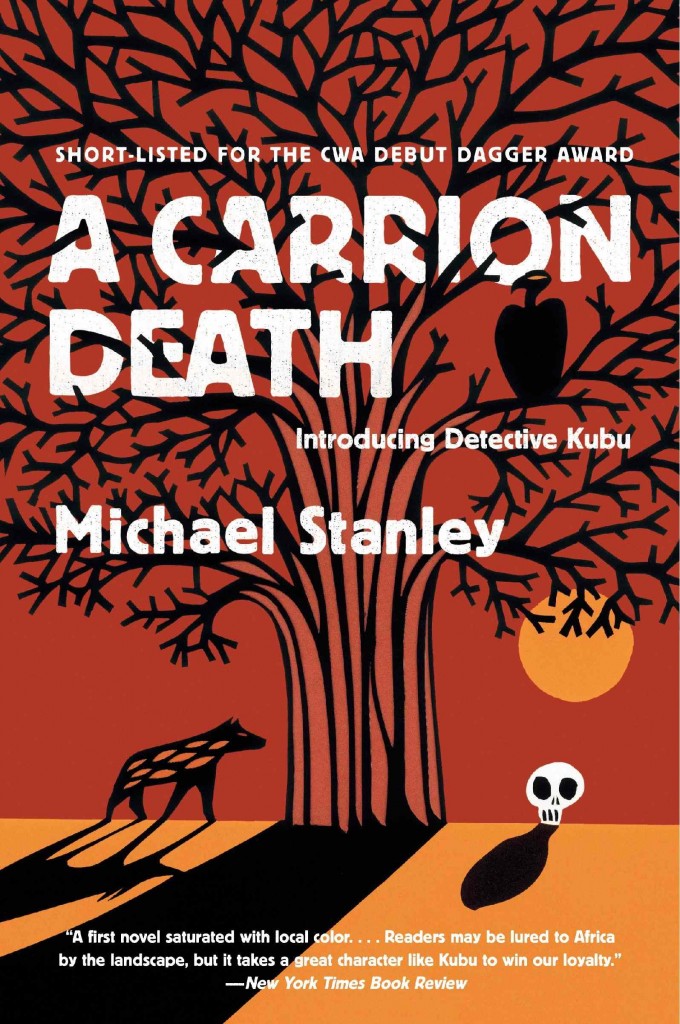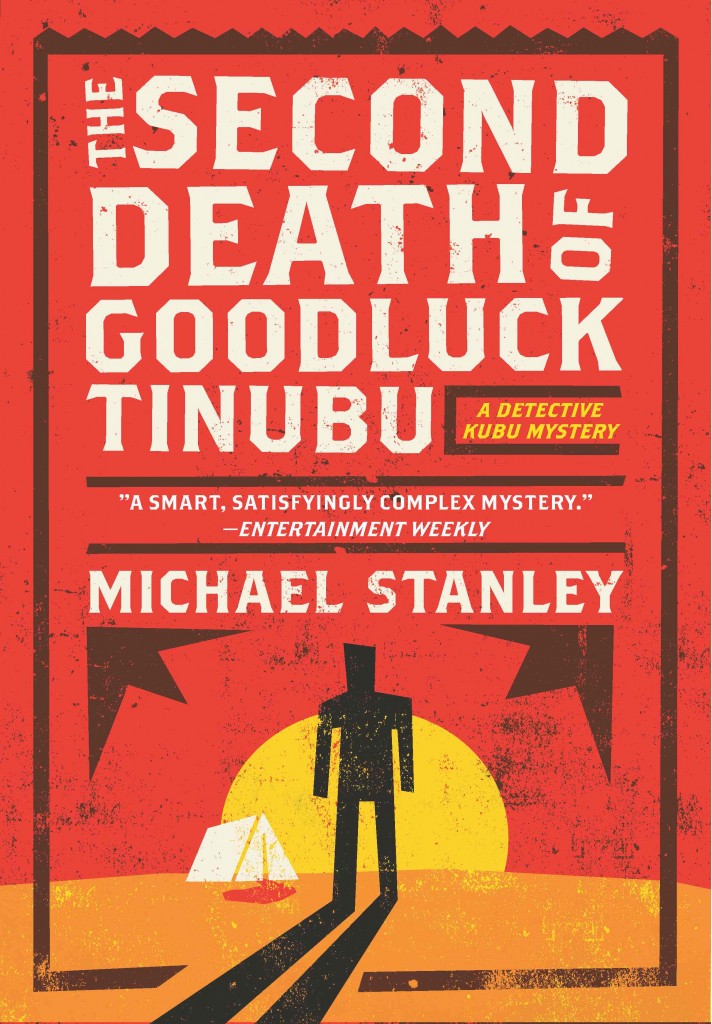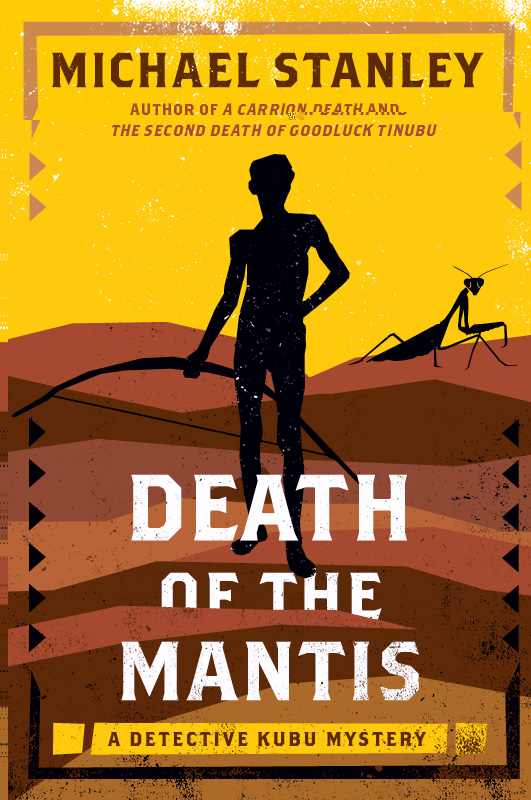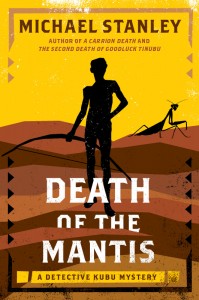I had promised you fine people a weekend of posts on craft, but once I consulted that subsection of my always-burgeoning to-blog-about-when-I-can-find-the-time list, I realized that I could conceivably treat you to a full season of it. Ever since, I’ve been paralyzed by indecision about where in the morass to start.
Why is the list so long, you ask? It’s a predictable side effect of living on an editor’s desk, I’m afraid: I hate to break it to those of you new to the biz, but to read manuscripts for a living is to develop an ever-burgeoning array of literary pet peeves, and violent ones at that.
I’m not merely talking about coming to feel a well-justified horror of typos, finding that one’s eye twitches at the sight of the fourth sentence in the passive voice within a single paragraph, or startling one’s neighbors by hoarse, strangled cries of “Why do you hate the English language?” at manuscripts displaying a blithe disregard of subject-object agreement, either. Most classically-trained professional readers enter the game with such attitudes and behaviors.
Those of us who have been at it for a while pick up much more sophisticated irritation-triggers, born of seeing the same types of plot device over and over again. A deep sense of futility at a story that opens with an unnamed woman, possibly clutching baby, fleeing equally unidentified pursuers at night through some sort of uninhabited landscape — forest, blasted heath, alligator-infested swamp, etc. — in a state of inarticulate terror. Sheer repetition may cause editorial malaise may escalate to free-floating anxiety if the lady in question happens to be sporting tattered garments, be toting some priceless yet surprisingly portable family heirloom, or possess (shudder) long, flowing hair that catches on the brambles/heather/passing reptiles as she runs breathlessly toward the uncertain future. If that hair happens to be — can I bring myself to type it? — the color of sunset or sunlight, all the pro can do is long for Death’s sweet embrace or the ability to shout “Next!”, whichever is more convenient.
Not all well-worn openings induce such extreme reactions, of course. An experienced agency screener might only sigh gustily over the eighteenth submission of the week in which the protagonist wakes up with no idea of where s/he is. Eyes might be rolled if that hapless soul is similarly in the dark over who s/he is. Those eyes will not begin searching the room for some handy stabbing implement unless that protagonist happens to glance into a nearby reflective surface — mirror, limpid pool, an unusually shiny gum wrapper — and note, possibly wonderingly, that s/he has blue eyes, long blonde or red hair, and pleasing facial features. (Why does no one ugly ever wake up an amnesiac?) If that self-assessment includes the sight of a leg, and that leg happens to be shapely, the implement may be used on ourselves.
And as fond as those of us pursue the life literary tend to be of caffeinated beverages, particularly of the warm variety (I’m looking at you, Millicent), we have been known to set them aside with unnecessary vim, resulting in splashing, when a narrative stops dead in its tracks in order to depict the protagonist (possibly one with long red, blonde, or raven tresses) having a heart-to-heart with a quite a bit less physically attractive best friend/confidante coworker/improbably non-judgmental parent about the ongoing conflict, to try to figure out what the heck s/he is going to do about it. We’ll take a God-give-me-strength-or-at-least-stamina sip if the protagonist and (usually her) friend conduct this plot-freezing confab whilst actually consuming coffee, tea, hot chocolate, or a cocktail that will no longer be trendy by the time the book comes out. Admittedly, we might choke on that judicious sip if the friend does not contribute more to the conversation than a series of semi-supportive wows and uh-huhs, but you’ll be delighted to hear that the spit-take doesn’t actually occur unless that conversation recaps, blow by predictable blow, the scene that fell immediately before the cozy chat.
By contrast, our blood pressure will rise only slightly if our hero/ine appears on the scene just in time to observe over a freshly-deceased body, “He’s dead.” Our molars will grind only a trifle if her/his superior subsequently orders her/him to — wait for it — find the killer, pronto, because that, obviously, would not have occurred to him/her. Tooth enamel may become damaged, however, if that superior is experiencing pressure for results from above/the mayor/the governor/the president, based upon a timeline so short that only a five-year-old with an unusually short attention span, a mosquito trying to live out the last few moments of its lifespan with gusto, or someone completely unfamiliar with the concept of an investigation would consider reasonable.
Should the deceased that s/he so helpfully declared defunct also in this moment be revealed to be a close personal friend never mentioned before in the story, relative (sisters seem to be particularly expendable, a trend troubling to those of us boasting a couple of X chromosomes and a full family tree), or that troubled kid who decided in the last scene to clean up his/her act/addict twelve hours off “the stuff”/terrified witness this close to agreeing to testify in that big trial about which the Aboveniks have been pressuring everyone in sight, apparently based upon a fundamental misunderstanding of how the criminal justice system works, we might end up clutching our right arms and visiting the emergency room. But you shouldn’t worry your pretty little head about it.
We’ll be fine. Tell my cop brother/D.A. sister/hard-boiled detective ex-husband that my last wish was that s/he would catch that killer/corrupt official/ill-mannered vampire. S/he knows I have always loved…gasp…whimper.
To be fair, all of us see these tropes on television and in movies all the time: to the many, many, many writers whose sense of drama was derived from flickering images, these plot devices often seem perfectly reasonable, if not downright mandatory. And in genre fiction, it often does make sense to honor book category conventions; a vampire’s gotta bite and a test pilot’s gotta fly, after all.
So what if Millicent the agency screener knows as soon as she realizes that the manuscript was written within the last ten years by an American that any vampire the reader is supposed to like will be — you’ll never see this coming — conflicted about killing any mammal larger than a stoat? Want me to tell you about the conflict s/he is going to have with a vampire with less rigid ethical boundaries?
It’s less reasonable, however, to expect any reader, much less one that does it for a living, to be surprised when the P.I.’s partner gets killed before we’ve really gotten to know him. Or when the grizzled (fill in job description here) two weeks from retirement either takes two in the chest or is assigned to train a rookie. (Is there any governmental institution in the world that embraces this as a standard practice?) Or if the only person in the book about whom another character says, “Oh, s/he had a tough childhood,” turns out to be the serial killer/arsonist/mysterious perpetrator of late-night office vandalism.
Just once, I’d like to see the axe murder turn out to have experienced an upbringing so normal that Sigmund Freud would have shouted, “You’re kidding — no one’s childhood is that perfect.” Good parents inadvertently produce sociopaths, too, do they not?
Oh, it hadn’t occurred to you that professional readers might enjoy being surprised every now and again? Believe me, one doesn’t have to cast one’s eyes over more than a thousand or two stories in which the (almost invariably male) protagonist’s wife/girlfriend and possibly small child is slaughtered within the first scene in order to provide him with motivation to perform the dangerous task that someone must manifestly do immediately before one begins being actively on the look-out for plots with a little more twist to them. By the same token, if one sees the same premises, plot twists, and even lines of dialogue in manuscript after manuscript, it does become a trifle difficult not to anticipate them.
“Oh, look,” Millicent mutters, unthinkingly taking a sip of her latté before it has had time to cool, “the only two vaguely attractive people in the book have just fallen in love. What’s next, a tale in which the Lady of Dubious Virtue turns out to have a heart of gold?”
Seriously, professional readers’ enjoyment can be quite impeded by this sense of déjà vu. No matter how many times one tells oneself, “Look, Mavis, I realize that cultural storytelling norms are pervasive, and that the mortality rate for mothers in the Star Wars series was virtually 100%, but you have no right to imagine that dear old white-headed lady on page 2 breathing her last on page 10. You’re just going to need to read the intervenes pages and see what happens,” it’s impossible not to feel a bit vindicated when the protagonist’s dear old white-headed mother does in fact breathe her last on the bottom of page 9.
But will Mavis find it entertaining? Well, it all depends on the writing, as agents and editors like to say. (Hey, every society has its tropes.) Even in a brilliantly lyrical manuscript, though, it’s substantially easier to entertain a reader who has not known since page 1 what was going to happen on page 158.
Just the nature of our old pal, the story arc, and of storytelling as an art form, I’m afraid. And, frankly, of an agent or editor’s job: reading thousands of manuscripts in the hope of finding the one that’s as pure gold as the ticker beating within the aforementioned Lady of Dubious Virtue.
That’s not the only source of pet peeves, of course; professional readers see the same movies and television shows as everyone else. We’re not immune to the influence of pop culture, however much some high literary types might imply otherwise. Your humble correspondent’s personal least-favorite — the narrative shortcut I like to call the it’s gotta be… phenomenon — crops up constantly, not only in manuscript submissions, but throughout the cultural firmament.
How much do I dislike seeing it on the page? Well, you know how much I enjoy defining things? This time, in order to expose you to it as a brand-new Millicent might experience the phenomenon, I’m going to bypass definition entirely, opting instead to show you a few examples. Try to spot it in the wild.
Tyrone brought his beloved motorcycle to a screeching halt beside the bevy of onlookers. He could tell before he fought his way to the front of the crowd that Sheila was dead. Living people can’t fold themselves in to rectangles that small, much less spread their arms the length of a city block and their long raven hair across the awnings of three separate businesses. That requires assistance from a psycho with a chopping implement, possibly one from a less-than-happy home.
And he knew just the psycho to do it. Gunning his motor, he raced off into the night in pursuit of Garland Hecht.
Did you notice it? Admittedly, it’s subtle here — and in our next example.
“You’re not going to send me away again,” Arlene shouted. “My daughter’s been missing for three days, and all you’ve done is tell me to be patient!”
The principal’s patience seemed to be waning. “I understand that this is stressful for you, Mrs. Belcher, but the marching band’s not back from its maneuvers yet. For all we know, she simply missed the bus.”
The phone rang. Arlene leapt to answer it. “Lana?”
A pause. “Mom?”
Sensing a pattern here? No? Let’s try again.
I couldn’t believe my ears. “A break-in? At ten o’clock on a Monday morning?”
Bob pointed to a couple of indistinct footprints. “Well, someone’s been here.”
The officer cleared his throat. How long had he been out of the academy, forty-five minutes? “Um, ma’am, could you tell us if there’s anything missing?”
I already knew that there wouldn’t be. It wasn’t Warren’s style. “Not that I can see. But this isn’t a thief.”
“Wait,” the officer said. “You know who did this?”
“Yes. My ex-business partner.”
“Yeah, right.” Bob guffawed. “He’s not only dead; he’s buried halfway across the country.”
Dear, naïve boy: was he unfamiliar with the ease with which a wax figure could be introduced into a coffin at a closed-casket funeral? I gave up on explaining and turned to the officer. “I appreciate your concern, but there’s really nothing for you to do here. I’ll handle this myself.”
Predictably, Bob exploded. “But Claudine, that’s crazy! Ghosts don’t shatter living room windows. For all you know, whoever broke it is coming back!”
Oh, I was sure of that. In fact, I was counting on it. Only this time, I’d be prepared.
If it didn’t strike you that time — and it might not; this one’s ubiquitous — I shall have to fling all subtlety to the winds. I present you now a blatant version. Hint: this is also the device’s most common form.
The chief dispensed with the civilities. “About time you got here, detectives. A fifth burglary, and downtown’s breathing down my neck to get results.”
Bonnie and Mac glanced at each other, then at the crime scene. It looked nothing like the other four, except for what was not there: a Persian carpet showed dents where the grand piano once stood. A single candle burned on the mantelpiece. The family photos on either side had not been disturbed.
She leaned toward her partner. “It’s got to be our guy.”
“His rage is clearly escalating,” Mac whispered.
She held her finger to her lips. “Chief,” she called across the room, “we’ve got to go track down a lead.”
It leapt off the screen at you that time, I hope. If not, let me ask you what I would scrawl in the margin of this manuscript: how did Bonnie and Mac know that even though the crime scene was different, the same perpetrator had stolen this piano as the previous ones? Is not the only common element here the theft of a piano, and is it not conceivable that more than one piano thief is currently occupying the planet?
While we’re at it, what makes Claudine so sure that Warren was the only conceivable window-smasher? Does he hold a national monopoly on the practice? Does she have any other reason to believe him to be above ground?
And how did Arlene Belcher know that her daughter was the caller? It wasn’t her phone, after all; plenty of people telephone high school principals. Was it just a lucky guess? If so, why didn’t the narrative present it that way — or at least show the principal acting surprised at her answering his phone?
Finally, is there any basis for Tyrone’s certitude that his favorite psychopath hacked up Sheila? Or does he simply know no other psychopaths?
The answers to all of these questions, I regret to say, ultimately boil down to the same thing in each case: the characters leapt to these conclusions because the plot required it. Not because it would be impossible for the writer to move these various stories forward unless a major character stated categorically that this, and only this, was the only plausible perpetrator, but because the narrative is using this device to avoid having to deal with any other logical possibilities.
Or even, in several of these cases, to describe what makes the concluder so darned sure. Yet in each instance, the reader is told point-blank that X must be true — and, since the narrative does not question that bottom-lining statement, the reader is left to assume that it must, indeed, be accurate.
Pardon my asking, but why must it be true? As these passages were written, none of the characters making these assertions seemed to have much logical basis for leaping to these conclusions. Admittedly, we’re also not shown any reason to doubt these sweeping assertions, but that’s not the same thing as showing enough on the page that we can draw these conclusions along with the character, is it?
To a professional reader’s eye, the it’s gotta be… phenomenon is primarily a narrative shortcut. It saves the narrative the trouble of presenting either plausible inductive or deductive reasoning by simply stating what the writer wants the reader to believe.
And that, my friends, is a show, don’t tell problem.
Oh, you didn’t see that coming? Millicent would have; so would most professional readers. Simply asserting that X is the case, Y is this kind of person, Z is feeling Q is classic telling, not showing. Instead of providing the reader with a dozen pieces of evidence that would lead the reader to realize that they all point to X, or demonstrating the kind of person Y is through action and dialogue, or illustrating Z’s Q feelings through same, the text just assumes that the reader needs to be told all of these things point-blank.
From an editorial perspective, this is not merely less effective storytelling — it implies that the writer does not trust the reader’s intelligence enough to draw the correct conclusions. But most fiction readers don’t require spoon-feeding; they tend to find it a bit obvious.
And if they find it obvious, how do you think a seasoned Millicent will feel about it? Plots low on complications tend to minimize conflict; a straight line from mystery to revelation is seldom the most interesting way to get there. So if the manuscript in question is well written, she might well feel disappointed at seeing potentially interesting — and perhaps less predictable — possibilities cut off by it’s gotta be….
“No,” she will long to lecture the manuscript, “it doesn’t have to be, as this is currently written. Please, either show me in detail why the path you’re choosing here is the logical one, or present me with enough plausible alternative explanations that I may have the pleasure of trying to solve a complex puzzle for myself.”
That raised some hackles out there, didn’t it? “But Anne,” writers fond of quick-deciding characters protest, “I read Tyrone, Arlene, Claudine, Bonnie, and/or Mac’s reactions in a completely different way — and, appropriately for this fine nation’s current trends in filmic storytelling, in the manner that I suspect screenwriters and directors intend me to interpret them. Where you and Millicent see narrative convenience, I see smart characters doing what smart people do all the time in real life: draw impressive conclusions from scant evidence.”
You have a point, speed lovers: intelligent people can often interpret subtle clues correctly and distill them into statements of fact. But if you’ll pardon my mentioning it, people of normal intelligence are also given to assessing situations and drawing conclusions therefrom. And I’m sure you’ve noticed that both in novels and in those TV shows and movies to which you allude, a fairly standard means of demonstrating a character’s lack of intelligence is to show him or her making untrue observations based on scant proof.
See the problem? By disregarding entire universes of alternate possibilities, Tyrone, Arlene, Claudine, Bonnie, and Mac could be exhibiting lightning-fast interpretive skills — or they could simply be too ill-informed or dim-witted to realize that there are other options.
I get what you mean, though, devotees of speed: television shows and movies have accustomed us all to equating intelligence with both the ability to blurt out relevant facts quickly and to make snap judgments about swiftly-changing situations, just as we’ve been trained to regard barking orders as indicative of authority, a belligerent insistence upon not accepting help as a token of toughness, and being able to assess a technically complex phenomenon at a glance as an infallible sign of expertise. I would just like to point out that it’s probably not entirely coincidental that all of these common traits also happen to be awfully convenient for someone trying to tell a story in a hurry.
Like, say, in an hour-long (minus commercials) cop show. Or in a 90-minute movie. A storytelling shortcut or two might be very helpful in wrapping things up quickly.
That doesn’t mean, though, that these common storytelling shortcuts constitute the only way to tell a story — or necessarily the best way for your story. And isn’t one of the reasons that you wanted to write in the first place to express your own sense of story and characterization? Wouldn’t you enjoy astonishing your reader with a plethora of possibilities — and having the satisfaction of seeing that reader become embroiled in trying to resolve the plot’s conflicts along with the protagonist?
Every writer must answer those questions for him or herself, of course. Only, please, when you’re tempted to cut to the chase, ask yourself: does it have to be this way? Or am I avoiding exploring interesting alternatives or complications in the interest of speed?
Give it some thought, please. And, at the risk of being predictable, let me encourage you to keep up the good work.













